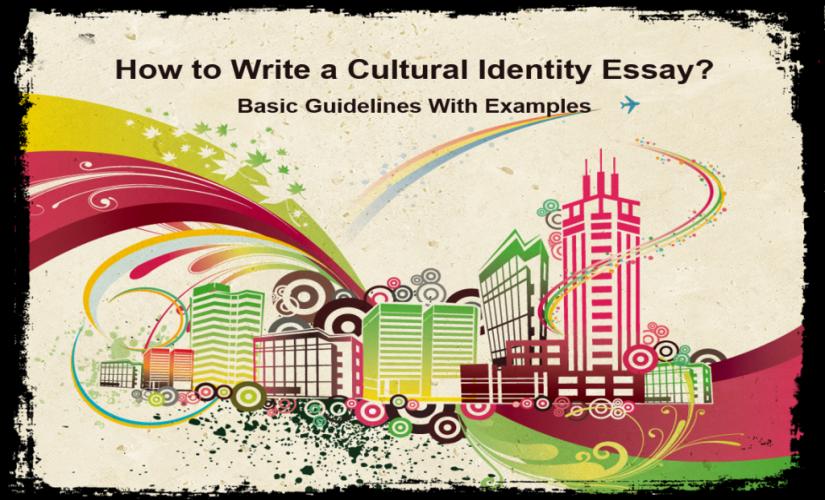

Our Identity: "Who Am I (Really)?"
Defining our identity is a lifelong challenge..
Posted June 1, 2016
“What’s It All About, Alfie?” That’s the title of a touching film from the late sixties about a young man trying to “find himself” (played by Michael Caine).
Presumably, when young people “find themselves” they have developed a sense of what they’re all about, or their true “ Identity .” “Coming of Age” is a similar theme often represented in film (“American Grafitti”) and novels (“The Catcher in the Rye”).
All these terms refer to the stage of life when a young person has matured, feels good about themselves at work, play, and in relationships, and is looking forward to the future. We first become interested in our personal identity during adolescence , when we begin asking ourselves identity-related questions, along the lines of, “Who am I? What do I stand for? What do I want out of life?"
Most colleges offer a Freshman course “Introductory Psychology” (“Psych 101”), which teaches eager young students about the concept of identity (which is largely about them!) The concept was developed by Dr. Erik Erikson, who held that developing a core identity was the major existential challenge to adolescents, and that this “task” had to be successfully resolved before they could ably embark into young adulthood.
Adolescence is a period marked by dramatic transformative developmental changes over a short span of years, which occur relatively rapidly and involve every cell and sinew of the human body and mind. There may be some turmoil at that time of life, and many parents expect adolescents’ lives to be filled with turbulence, as depicted by Shakespeare in A Winter’s Tale: “I would there were no age between ten and three and twenty, for there is nothing in the between except getting wenches with child, stealing and fighting.” Anna Freud called this “Sturm und Drang” (emotional storminess), and deemed it an inevitable rite of passage.
But here are three truisms about Identity:
1) Many adolescents do not experience emotional upheaval; 2) “Identity” is not the sole domain of adolescents; 3) Coming to grips with our identity is not “resolved” during the adolescent years: Defining one’s Identity is a Recurrent Lifelong Challenge.
We revisit the same existential questions we asked during adolescence throughout our lives, but while the questions remain the same, the answers change significantly and are very different over the course of one’s life.
Who among us hasn’t looked in the mirror (real or metaphoric) from time to time throughout our lives and asked ourselves these identical questions? (“What am I doing with my life?” “Is this what I am all about?”)
The answers to those questions are related only to that specific moment in time, and are frequently modified over a lifetime, depending on one’s age, health, relationships, mood and life situation. But checking in with ourselves is important.
We wrestle with these questions during major milestones or during crisis situations. Or when there are significant changes in our live, during new relationships, career moves, illnesses and losses.
We are sentient beings and as such we are constantly reevaluating ourselves and our goals . We think about these identity-related issues and they appear in our dreams and unconscious thoughts.
Wrestling with existential quandaries like “Who Am I (really)?” is a necessary part of our lifelong quests for understanding ourselves. They are important bellwethers and beacons to help us set our personal directions and goals, make important choices, and evaluate how we are doing in our journeys.
Ultimately, of course, we are all seeking fulfillment and meaning in our lives.

Saul Levine M.D. , is a professor emeritus at the University of California at San Diego.
- Find a Therapist
- Find a Treatment Center
- Find a Psychiatrist
- Find a Support Group
- Find Teletherapy
- United States
- Brooklyn, NY
- Chicago, IL
- Houston, TX
- Los Angeles, CA
- New York, NY
- Portland, OR
- San Diego, CA
- San Francisco, CA
- Seattle, WA
- Washington, DC
- Asperger's
- Bipolar Disorder
- Chronic Pain
- Eating Disorders
- Passive Aggression
- Personality
- Goal Setting
- Positive Psychology
- Stopping Smoking
- Low Sexual Desire
- Relationships
- Child Development
- Therapy Center NEW
- Diagnosis Dictionary
- Types of Therapy

Understanding what emotional intelligence looks like and the steps needed to improve it could light a path to a more emotionally adept world.
- Coronavirus Disease 2019
- Affective Forecasting
- Neuroscience

Who Am I Essay for Students: Exploring Self-Identity

It was a sunny day when little Arjun, a student of third grade, came home with a creased brow. “Ma,” he began hesitantly, “our teacher gave us an assignment to write a ‘Who am I’ essay. I’m not sure what to write.” His mother, always the guiding star, smiled warmly and said, “Arjun, this is an opportunity for you to discover yourself and introduce your essence to the world.”
Much like Arjun, several students across the nation grapple with the profound question: “Who am I?” This theme is not just a mere topic for an essay but an existential question which can be delved into at any age, by children and adults alike.
Who Am I Essay for students: An Exploration of Self
The “Who am I” essay for students is a reflective and introspective exercise. It is not simply about listing out facts about oneself but is more about understanding one’s identity, characteristics, values, and beliefs.
Self-awareness: The essay can be a starting point for students to introspect and understand their feelings, passions, aspirations, and fears.
Enhanced Writing Skills: Such introspective topics hone their expressive and descriptive writing skills .
Development of Critical Thinking: Delving deep into the subject encourages students to think critically about their role in the world, their aspirations, and their relationships with others.
Guidelines to Frame the ‘Who Am I’ Essay for Students
Introducing Oneself: Begin with basic details like name, age, school, and interests.
Sharing Experiences: Narrate a memorable incident that had an impact on you.
Values and Beliefs: Discuss what you stand for and why.
Dreams and Aspirations: Talk about what you aim to become and the milestones you’ve set for yourself.
Concluding with Reflection: Summarise what you’ve learned about yourself while writing this essay.
Diving Deeper: “Who Am I as a Person?”
Going beyond the scope of the classroom, the question, “Who am I as a person?” nudges one to evaluate their evolving identity in the larger framework of society and personal relationships.
Who Am I Questions for Students to Ponder:
What are the qualities that define me?
What are the values I hold dear?
How do my actions reflect my beliefs?
How do I handle challenges and adversities?
How do my friends and family perceive me?
Reflecting on these questions allows students to shape their identity consciously, ensuring that they grow into well-rounded and grounded individuals.
The Influence of Culture and Tradition
India, with its rich tapestry of cultures , traditions, and philosophies, plays a significant role in shaping the identity of its young minds. When students contemplate the question, “Who am I?”, it is crucial to acknowledge the impact of our cultural heritage. The festivals we celebrate, the stories we grew up hearing, and the traditions we observe at home influence our values, beliefs, and understanding of ourselves. Incorporating these cultural nuances in the essay provides depth, showcases pride in one’s roots, and paints a vivid picture of one’s upbringing.
The Digital Era and Self-Identity
The identity puzzle has taken on a new dimension in the digital age, which is characterised by social media, online interactions, and boundless information. Students today view themselves through the vastness of the virtual world as well as the lens of their close surroundings. This section could highlight the positive influences of the digital age – like global connectivity, exposure to diverse ideas, and self-expression – while also delving into its challenges, such as constant comparison, identity distortions, and peer pressures.
Introducing Oneself: Start by painting a brief picture of your life. Please introduce yourself by sharing your name, age, and school, but don’t stop there. Delve deeper and tell us about your background, the languages you’re proficient in, and any unique quirks or habits that make you stand out. Perhaps there’s a cherished nickname your siblings have given you or a lifelong hobby that has defined your interests since childhood?
Sharing Experiences: Instead of just recounting any incident, pick a transformative experience. Perhaps it was the first time you faced failure or an unexpected act of kindness you received. Delve into the emotions you felt, the lessons you learned, and how it shaped your perspective.
Values and Beliefs: Here, expand beyond just listing them. Talk about the origins of these values. Did a specific event inculcate them? Were they passed down from your grandparents? For instance, if respect is a value you hold dear, narrate an incident where this value played a pivotal role.
Dreams and Aspirations: More than just stating your dreams, describe the path you envision to reach them. What steps have you already taken? Mention people who inspire you in this journey and how you plan to overcome potential challenges.
Concluding with Reflection: This is not just a summary but a synthesis of your revelations. Talk about your anticipations for the future based on what you’ve discovered about yourself. How has writing this essay impacted or altered your self-view?
The Role of Education in Self Discovery
Education plays a pivotal role in a child’s journey of self-discovery. Schools, in particular, serve as a nurturing ground for children to explore their identity. While the curriculum equips them with academic prowess, extracurricular activities, peer interactions, and guidance from teachers mould their personalities.
For parents seeking a wholesome environment for their child’s overall development, EuroKids is a beacon of excellence. Renowned for its balanced approach to learning, EuroKids appreciates the uniqueness of every child. Beyond academic achievements, they foster a space where children can be themselves, ask questions, explore their interests , and importantly, embark on the journey of ‘Who am I?’
Identity is not a stagnant concept but a dynamic, ever-evolving realisation. The ‘Who am I’ essay is not just a piece of academic work but a testament to this ongoing journey of self-discovery. As our children venture into this introspection, they not only gain clarity about their current selves but also pave the way for future introspections. Witnessing this journey is both an honour and a responsibility for parents. Parents can ensure that their children stand before the world with authenticity, pride, and an unchanging sense of self by providing them with the tools, atmosphere, and, most crucially, confidence. Who am I? is a straightforward but meaningful question that nicely combines introspection on our past, acceptance of our present, and hopes for the future. And as we all discover, the answer is a delightful blend of experiences, values, dreams, and the myriad influences that surround us.
Calculate for all schools
Your chance of acceptance, your chancing factors, extracurriculars, how do i write a college essay about my identity.
My identity has played a big role in my life, and I want to write about it in my college essay. How can I approach this topic in a way that showcases who I am without sounding cliché or overly dramatic? Thanks for any suggestions!
Hello! I'm glad to see that you're considering writing about your identity, as it's an important part of who you are. To avoid sounding cliché or overly dramatic, there are a few tips I'd like to share with you.
First, focus on specific experiences or moments that have shaped your identity. Instead of making general statements, think about the events in your life that have had a significant impact on you and what you learned from them. This will help you tell a unique story that only you can tell.
Second, don't be afraid to be vulnerable. Sharing your personal thoughts and feelings can make your essay more engaging and relatable. For example, my child wrote about their experience as an immigrant, discussing the challenges they faced in adapting to a new culture and how it shaped their perspective on life.
Third, use vivid language and descriptive details to paint a picture for your reader. This will make your essay more memorable and allow your reader to connect with your story on a deeper level. For example, instead of just saying 'I felt out of place,' describe the physical and emotional sensations you experienced in that moment.
Finally, make sure to tie your identity back to your goals, values, or aspirations. Show how your identity has influenced your choices and what you hope to accomplish in the future. This will give your essay a sense of purpose and demonstrate your growth as an individual.
I hope these tips help you craft a compelling essay that showcases your unique identity. Best of luck with your college applications!
About CollegeVine’s Expert FAQ
CollegeVine’s Q&A seeks to offer informed perspectives on commonly asked admissions questions. Every answer is refined and validated by our team of admissions experts to ensure it resonates with trusted knowledge in the field.
Top Nav Breadcrumb
- Ask a question

Who am I? A conversation about identity
Diploma Programme (DP) graduates and classmates, Klaudia Ofwona Draber and Suzanna Sobolewska reflect on what it means to understand and identify yourself. This is Klaudia’s second story in our graduate voices series.

“The self is much larger than we can fathom”.
The question of identity, ‘Who am I?’, preoccupies not only philosophers and psychologists but also each one of us. Consciously or unconsciously it shapes our lives—yet it always eludes us. A sense of defined identity offers illusory clarity, confidence and comfort. We assume that the self must be fixed, yet experience proves otherwise. You may have experienced unsettling moments when you do, say, think or feel something that doesn’t conform to your own self-image. This produces an anxiety that maybe you don’t know yourself that well after all.
Self-knowledge involves dissolution as much as it involves construction. In his book Archetypes of the Collective Unconscious, psychologist Carl Gustav Jung called this process individuation, whose aim is to strive towards a, “synthesis of the self”. It requires letting go of pre-conceived notions, recognizing new insights about yourself, and integrating them into your self-concept. While it may feel like coming apart, it enables seeing yourself in your utmost awesome complexity. The self is much larger than we can fathom. Walt Whitman celebrated this in Song of Myself, 51 : ”Do I contradict myself? / Very well then I contradict myself, / (I am large, I contain multitudes)”.
Not only is identity multidimensional, and even inherently contradictory, it is also in flux. You are constantly unfolding as you define yourself in relation to what and who is around you. Sociology Professor Ginetta E. B. Candelario in her book Black behind the Ears: Dominican Racial Identity from Museums to Beauty Shops calls this symbolic interaction-ism , where, “the self is produced through interactions with others, interactions that are mediated and structured through multiple social groups and institutions”.
Identity exploration is a bold feat. It can imply not only transgressing entrenched internal convictions and community norms but also defying societal demands for clarity, precision and constancy. Challenging predefined categories, such as gender, race, sexuality, in favor of fluid, coexisting or nonspecific identifications can be difficult but liberating. It is fundamental that we, as individuals and as a society, create more space for the complexity of our identities.
We will explore how the multiplicity and fluidity of identity relate to language and culture, as well as our passions and everyday life. We also consider how you can make space in your life for more freedom in exploring who you are.
Language and culture
Learning languages and experiencing various cultures can broaden your consciousness and expand your sense of identity”.
In today’s globalized world, different languages and cultures intermingle on a greater scale than ever before. You constantly experience multilingual and multicultural families, schools, work-places and communities. As a result, many people today find themselves in ‘in-between’ states (in-between countries, continents, cultures, languages). In unfamiliar and diverse environments, we tend to define ourselves through negations: I am different from X; therefore, I am not X but some other Y. This often leads to relativizing differences and ignoring similarities.
Language can serve as a safe tool for identity exploration. Experimenting with varying meanings of similarly sounding words (and vice versa), brings enjoyment and a sense of belonging, even if only transitory. Learning languages and experiencing various cultures can broaden your consciousness and expand your sense of identity. Becoming immersed in different customs, idioms, art and beliefs enables appreciating both their uniqueness and underlying universality.
In heterogeneous societies, trying to blend in can come at the price of individuality. In the case of code-switching, whereby you adapt your speech to the group you are interacting with, language becomes a tool for adaptation and self-preservation.

You code-switch in response to being perceived as ‘other’—such as when you migrate, look ‘different’ or feel displaced. Chandra Arthur in The Cost of Code Switching TED Talk draws attention to the experience of people of color, who are forced to code-switch in order to be perceived as ‘nonthreatening’. She enlightens us at the same time that, “the expectation of code-switching threatens true diversity”. Energy spent on ’proving yourself’ or fitting in detracts from self-realization.
Passions and everyday life
“When you realize there is no script, you can invent your life however you want”
Knowing and exploring who you are is a lifelong commitment, with no predetermined end goal. We often put a lot of pressure on ourselves to follow a linear, rational and predictable path. But this leaves little space for spontaneity, intuition and creativity. You may feel drawn to a particular topic, discipline or activity but struggle to define why. Following a new path is always a gamble—it’s hard to know what it will entail or what practical considerations may stand in the way. Many of us struggle with guilt, uncertainty and anxiety, but that is because we assume there is a ‘right’ and ‘wrong’ way or outcome. Instead, trust yourself, give yourself permission to follow your heart and be more accepting of mistakes.
Passions are never simple or one-dimensional—they are usually a mix of, sometimes seemingly unrelated, interests. There aren’t many new things we can invent in life, but there are new ways we can connect them. Pursuing different interests may seem like a waste of time but when you realize there is no script, you can invent your life however you want. Audre Lorde in her essay Poetry is Not a Luxury assures us, “Sometimes we drug ourselves with dreams of new ideas … But there are no new ideas … There are only old and forgotten ones, new combinations, extrapolations and recognitions from within ourselves—along with the renewed courage to try them out”. You can be creative in how you choose to bridge your seemingly incompatible passions and allow your contradictory selves to coexist. The synthesis will be something new, unique, truly yours.
Space for self-exploration
“You ultimately must rely on your own intuition to find your own truth”.
Identity is a constant search. In contemporary life, we chase after certain ideals. We strive towards a ‘perfect’ self with a ‘perfect’ body, house, family, job etc. Keeping yourself busy may help you identify with something and prove that you exist, in relation to something or someone else. In fact, we don’t realize that the self, and a sense of comfort, can be experienced when we just allow ourselves to be, in the here and now. Wherever you’re sitting, laying down, standing, walking—let yourself feel the present moment. This is where and when your intuition unfolds. It is the place you can grow from, process trauma and gain insight.
Leaving time in the week for undirected exploration or taking conscious action towards your beliefs will allow your true self to emerge—unrestricted, authentic, independent of anything else.

Those moments, when you exist and create freely, are terrifying and demanding, because of the accountability that comes with owning who you really are, not as defined by other people’s perceptions. But these are also moments of feeling the most and truly alive.
There are no set formulas or clear paths for discovering and living your purpose. We must each find and build our own way. This is both scary and empowering. You must be willing to go into uncharted territory, make your own discernment and take responsibility for them. You ultimately must rely on your own intuition to find your own truth.
Start by letting the question of ‘Who am I?’ remain a question.

Suzanna Sobolewska is a communications professional and humanities thinker. She has developed policy and public affairs strategies related to social innovation in the EU policy space. You can find more about her work here . She holds a dual master’s degree in corporate communications and management from IE Business School, as well as a BSc in international relations from the London School of Economics and Political Science. In leisure time she enjoys being out in nature with her dog. Connect with her here .
Klaudia Ofwona Draber is the executive director and curator at KODA, an arts non-profit based in NYC. Connect with KODA on Instagram here . Previously she managed projects in Africa, at UBS and the British Council. She completed MA in art business at the Sotheby’s Institute of Art New York and MSc in economics at the Warsaw School of Economics, with a focus on the art market. She currently lives in Brooklyn, NY, where she enjoys trips to the ocean and walks in Prospect Park. You can connect with her on LinkedIn here .

To hear more from Diploma Programme (DP) graduates check out these IB programme stories. If you are an IB grad and want to share your story, write to us at [email protected]. We appreciate your support in sharing IB stories and invite you to connect with us on LinkedIn , Twitter Instagram and YouTube !
If you enjoyed this story, consider reading more below:

Graduate Voices
About the IB
Who Am I Essay
500 words essay on who am i.
The population of the world now is more than a whopping seven billion. In spite of such a massive population, one important fact remains that each person has their own unique personality and individuality. Let us focus on personality and individuality with this who am I essay.

Who am I Essay
My Inspiration
I am a young boy who is still learning in life. Furthermore, I won’t go deep into revealing personal information, like where I come from, which school I went to, my age, and the identity of my parents. The reason for this is that although these factors represent me, they certainly do not define me.
So, what exactly are the qualities that define me or for that matter anyone else? Well, these qualities are character and persona. As such when writing about oneself, one must stick to talking about one’s character and personality.
I consider myself an ambitious person who has big dreams in life. Moreover, doctors have always been my inspiration and I wanted to become one myself. Also, my father is a doctor himself so I had the opportunity of observing a doctor closely.
I came to realize that doctors have a really busy life. This I can certainly say with conviction as I have seen my father sacrifice his free time in order to save lives at hospitals. Most noteworthy, my ambition is to become a successful doctor in future and save the lives of people.
My Personality and Beliefs
I am an ambivert person by nature. This means I enjoy socialising with people but not too much. I also prefer to spend time alone as I find comfort in my own company.
This nature of mine has proven to be helpful when it comes to studies. This is because I have the patience to study for long hours. Moreover, for a subject that is too difficult, I and my friends take part in a group study.
Spending time alone, I have the habit of engaging in activities like reading a book or learning to play a musical instrument. Furthermore, I am a religious person who strongly believes in God. My belief in God certainly boosts my self confidence .
I feel sad that in the modern era, many people don’t believe in God. I, on the other hand, certainly do believe in the existence of a superpower that controls the entire universe. Most noteworthy, my belief in an all-powerful creator has helped me become a better person.
The important thing to remember is that a God-fearing person is likely to be good. The reason for this is that such a person would act righteously due to the belief that God is always watching.
Get the huge list of more than 500 Essay Topics and Ideas
Conclusion of Who am I Essay
‘Who am I’ is an extremely important question that every individual must find an answer to. Furthermore, to find the answer, people must reflect and ponder on themselves and their surroundings. Most noteworthy, those who have the answer to this are able to live a life of happiness and contentment.
FAQs For Who am I Essay
Question 1: What is the meaning of who am I?
Answer 1: The concept of who am I refers to one’s identity. Furthermore, identity is the all-encompassing system of relationships, values, experience, memories, feelings, and thoughts that define who a person really is.
Question 2: What is meant by true self?
Answer 2: True self is also known as real self, original self, or authentic self. Furthermore, all of these terms refer to the most honest aspect of a person. In other words, true self is an individual’s most authentic version keeping aside all the pretensions, affectations, and masks.
Customize your course in 30 seconds
Which class are you in.

- Travelling Essay
- Picnic Essay
- Our Country Essay
- My Parents Essay
- Essay on Favourite Personality
- Essay on Memorable Day of My Life
- Essay on Knowledge is Power
- Essay on Gurpurab
- Essay on My Favourite Season
- Essay on Types of Sports
Leave a Reply Cancel reply
Your email address will not be published. Required fields are marked *
Download the App

How to Write a Cultural Identity Essay With Tips and Examples
11 December 2023
last updated
Writing a cultural identity essay is an exciting academic exercise that allows students to develop and utilize critical thinking, reflective, and analytical skills. Unlike a standard essay, this type of paper requires learners to use first-person language throughout. In essence, a cultural identity essay is about writers and what makes them identify with a particular cultural orientation. When writing a cultural identity essay, authors should choose a specific identity and focus on it throughout their texts. Moreover, they should reflect and brainstorm, use the “show, not tell” method, utilize transitions to create a natural flow, and proofread their papers to eliminate mistakes and errors. Hence, students need to learn how to write a cultural identity essay to provide high-quality papers to their readers.
Definition of a Cultural Identity Essay
Students undertake different writing exercises in the learning environment to develop their critical thinking, reflective, and analytical skills. Basically, one of these exercises is academic writing , and among different types of essays that students write is a cultural identity essay. In this case, it is a type of essay where authors write about their culture, which entails exploring and explaining the significance of their cultural identity. Moreover, there are numerous topics that instructors may require students to write about in a cultural identity essay. For example, some of these essay topics fall under different disciplines, such as religion, socio-economic status, family, education, ethnicity, and business. In essence, the defining features of a cultural identity essay are what aspects make authors know that they are writing in this type of essay. In turn, these features include language, nationality, gender, history, upbringing, and religion, among many others.

Differences Between a Cultural Identity Essay and Other Papers
Generally, a cultural identity essay is similar to a standard essay regarding an essay structure and an essay outline . However, the point of difference is the topic. While standard essays, such as argumentative, persuasive, and informative essays, require learners to use third-person language, such a paper requires them to use first-person language. In this case, when writing a cultural identity essay, authors should use the word “I” throughout to show the audience that they are writing from their perspective. Indeed, this aspect is the primary objective of a cultural identity essay – to give the writer’s perspective concerning their culture. Besides, another point of difference between a cultural identity essay and other papers is that the former does not require writers to utilize external sources but to write from a personal viewpoint.
List of Possible Examples of Cultural Identity Essay Topics
1. cultural identity and socialization in a learning environment.
Here, a cultural identity essay prompt may require students to discuss the significance of culture in education, focusing on cultural identity and socialization. As such, this topic requires writers to reflect on how culture influences behavior in a learning environment.
2. The Impact of Culture Change on Family
Here, this prompt may require students to explore and discuss how culture impacts a family unit. Moreover, the theme is a family, and the students’ mission would be to explain how culture in all its dynamics affects families in diverse settings.
3. The Role of Language in Building a Cultural Identity
Here, instructions may require students to explore and explain the significance of language in cultural identity. Hence, writers should focus on explaining the place of culture in the sociology discipline, focusing on the connection between language and cultural identity.
4. The Significance of Culture in a Globalized Economy
Here, a cultural identity essay topic may require students to explore and discuss how culture affects individuals and businesses in today’s connected world. Also, the students’ task would be to explain how culture, in all its dynamics, such as language, is essential in business for individuals and enterprises.

5. How Culture Influences Relations in the Workplace
Here, an essay prompt may require students to explore and explain how culture, in all its dynamics, affects or influences social relations at the workplace. In turn, the task of writers, for example, would be to focus on how Human Resource (HR) departments can use culture to enrich workplace relations.
6. The Place of Culture in Individuals’ Self-Concept
Here, an analysis of a theme may require students to reflect on how their cultural orientation has affected their self-concept. Moreover, the student’s task would be to discuss how culture and its dynamics enable individuals to build a strong or weak understanding of themselves.
7. The Importance of Cultural Orientation in a Multicultural Environment
Here, assignment instructions may require students to explore and discuss how their cultural orientation enables them to operate in a culturally diverse environment, such as a school or workplace. In this case, the student’s task would be to explain how cultural characteristics, such as language and religion, facilitate or hamper social competency in a multicultural setting.
8. How Global Conflicts Disturb Cultural Identity for Refugees
Here, this example of a cultural identity topic may require students to explore and explain how conflicts in today’s world, such as civil unrest, affect the cultural identity of those who flee to foreign countries. Also, the student’s task would be to explain how one’s culture is affected in a new environment with totally different cultural dynamics.
9. The Challenges of Acculturation
Here, a cultural identity essay prompt may require students to explore and explain the challenges that individuals face in identifying with the dominant culture. In particular, the student’s task would be to explain the significance of the dominant culture and what those from other cultures that try to identify with it must confront.
10. Host Country Culture and Multinational Enterprises
Here, this prompt sample may require students to explore and explain how a host country’s culture affects expatriates working for multinational corporations. Besides, the students’ task would be to show how one’s culture defines their behaviors and how that can be affected in a new environment with new cultural characteristics.
11. Compare and Contrast Native Culture and Dominant Culture in the United States
Here, such instructions require students to explain specific areas of similarity and difference between the Native culture and the dominant culture. In turn, the students’ task would be to define the Native culture and the dominant culture and help the audience to understand whether they mean the same thing. Hence, whether they do or do not, students should elaborate.
12. The Objective of Acculturation
Here, this example of a cultural identity essay topic requires students to explore and explain why people prefer to identify with the dominant culture. Moreover, the students’ task would be to note the advantages of the dominant culture over others and the opportunities that one may access to identify with this dominant culture.
13. The Challenges That the LGBTQ Community Faces in the Modern World
Here, essay prompt instructions require students to explore and discuss the challenges that lesbians, gays, bisexuals, and transgender people face in their normal day-to-day activities. In this case, the students’ task would be to explain the uniqueness of the LGBTQ community and how stereotyping makes their lives miserable in an environment where people are intolerant of different personalities and viewpoints.
14. Dangers of Cultural Intolerance in the Health Care System
Here, instructions may require students to explore and discuss how nurses that are intolerant to cultural differences may jeopardize patients’ lives.
15. Advantages and Disadvantages of Acculturation
Here, a cultural identity essay prompt requires students to discuss the pros and cons of identifying with the dominant culture.
How Students Know if They Write a Cultural Identity Essay
The defining features of a cultural identity essay give students the indication that they need to write this kind of essay. Basically, when learners read instructions regarding their essay topics they need to write about, they should identify one or several defining elements. In turn, these elements include language, nationality, religion, ethnicity, and gender.
Structure of a Cultural Identity Essay
As stated previously, the primary point of similarity between a cultural identity essay and standard papers is an essay structure and an essay outline. Basically, this structure and outline comprise of three main sections: introduction, body, and conclusion. Like in all other essays, writing a cultural identity essay requires students to address specific issues, which are, in essence, the defining characteristics of the essay’s structure and outline.
I. Introduction and Its Defining Characteristics
The introduction is the first paragraph of a cultural identity essay. Here, students introduce themselves to the audience, giving a brief background of their cultural identity. Moreover, rules of academic writing dictate that this part should not exceed 10 percent of the entire paper. In this case, writers should be brief and concise. Then, the most prominent component of this section is a thesis, a statement that appears at the end of an introduction paragraph and whose objective is to indicate the writer’s mission. In summary, the introduction part’s defining features are the writer’s background and thesis statement . In turn, the former gives a hint about a writer, and the latter provides the audience with insight into the writer’s objective in writing a cultural identity essay.
The body of a cultural identity essay is the most significant section of a paper and takes the largest part. Generally, writers use several paragraphs to advance different arguments to explain specific concepts. In a cultural identity essay, writers can use different paragraphs to explain important aspects of their cultural identity. Nonetheless, what determines the number of paragraphs and the content of each is a paper topic. Also, the most prominent defining features of a cultural identity essay’s body are paragraphs, with each advancing a unique concept about the writer’s cultural identity. In turn, paragraphs are where writers provide real-life experiences and other personal anecdotes that help the audience to develop a deeper understanding of authors from a cultural perspective.
III. Conclusion
The conclusion part is the last section of a cultural identity essay. In particular, writers restate a thesis statement and summarize the main points from body paragraphs. Moreover, authors provide concluding remarks about a topic, which is mostly an objective personal opinion. In summary, the conclusion part’s defining features are a restatement of a thesis, a summary of the main points, and the writer’s final thoughts about a topic.
Outline Template for a Cultural Identity Essay
I. Introduction
A. Hook statement/sentence. B. Background information. C. A thesis statement that covers the main ideas from 1 to X in one sentence.
II. Body Paragraphs
A. Idea 1 B. Idea 2 … X. Idea X
A. Restating a thesis statement. B. Summary of the main points from A to X. C. Final thoughts.
An Example of a Cultural Identity Essay
Topic: Identifying as a Naturalist
I. Introduction Sample in a Cultural Identity Essay
The period of birth marks the beginning of one’s identity, with culture playing a significant role. However, from the stage of adolescence going forward, individuals begin to recognize and understand their cultural makeup. In my case, I have come to discover my love for nature, an aspect that I believe has made me a naturalist both in belief and action.
II. Examples of Body Paragraphs in a Cultural Identity Essay
A. idea 1: parents.
Parents play a critical role in shaping the cultural and personal identity of their children. In my case, it is my mother who has instilled in me a love for nature. Although I may not say exactly when this love started, I can only reason that since it was ingrained in me since childhood, it has developed gradually.
B. Idea 2: Naturalism
Today, naturalism defines my interactions with people and the environment. In short, I can say it shapes my worldview. As a lover of nature herself, my mother had this habit of taking me outdoors when I was a toddler. I have seen family photographs of my mother walking through parks and forests holding my hand. What is noticeable in these pictures besides my mother and me is the tree cover that gives the setting such a lovely sight. Moreover, I can now understand why I seem more conversant with the names and species of flowers, trees, and birds than my siblings- my mother was the influence. In turn, my siblings and friends make a joke that I have developed a strong love for nature to the point of identifying myself with the environment. Hence, the basis for this argument is my love for the green color, where even my clothes and toys are mostly green.
III. Conclusion Sample of a Cultural Identity Essay
Naturally, human beings behave in line with their cultural background and orientation. Basically, this behavior is what determines or reflects their cultural identity. In turn, my intense love for nature underscores my naturalist identity. While I may not tell the stage in life when I assumed this identity, I know my mother has played a significant role in shaping it, and this is since childhood.
Summing Up on How to Write a Good Cultural Identity Essay
Like any standard paper, writing a cultural identity essay allows students to build essential skills, such as critical thinking, reflective, and analytical skills. In this case, the essence of a paper is to provide the writer’s cultural identity, background, or orientation. Therefore, in order to learn how to write a good cultural identity essay, students should master the following tips:
- Decide where to focus. Culture is a broad topic, and deciding what to focus on is essential in producing a cultural identity essay. For example, one may have several cultural identities, and addressing all may lead to inconclusive explanations.
- Reflect and brainstorm. Given the close link between one’s cultural identity and personal experiences, learners need to reflect on experiences that would provide the audience with an accurate picture of their cultural identity.
- Adopt the “Show, not tell” approach by providing vivid details about one’s experiences. Using personal anecdotes may be effective in accomplishing this objective.
- Use transitions , such as “therefore,” “thus,” ” additionally,” and “furthermore,” to enhance a natural and logical flow throughout the essay.
- Stay personal by using first-person language to describe one’s background and experiences.
- Proofread a cultural identity essay to eliminate spelling and grammatical mistakes and other notable errors, such as an inconsistent life storyline.
To Learn More, Read Relevant Articles
How to cite a dsm-5 in apa 7 and 6: guidelines with examples, how to cite an encyclopedia in mla 9: the main rules with examples.
Watch CBS News
5 tourists killed in case of mistaken identity in Ecuador while 9 shot dead is separate attack: "The battle continues"
Updated on: April 1, 2024 / 6:52 AM EDT / CBS/AFP
Ecuadoran gangsters abducted, interrogated and killed five tourists, apparently thinking they were members of a rival drug gang, officials said this weekend, while a separate attack by gunmen killed nine people on the country's coast.
Around 20 attackers stormed a hotel Friday in the beach town of Ayampe in southern Ecuador and kidnapped six adults and a child, local police commander Richard Vaca said.
The abducted tourists, all Ecuadorans, were interrogated and hours later the bodies of five adults were found with gunshot wounds on a road, he said.
The assailants "apparently mistook them for adversaries" from a rival drug gang, said Vaca.
President Daniel Noboa said one person has been arrested so far in the case and the government is tracking down the rest of the attackers.
The killings "remind us that the battle continues," Noboa said on social media, along with a video of a man handcuffed and bent over, being led away forcefully by an armed police officer.
Cualquier ataque contra un ecuatoriano es un ataque al Ecuador. Lo sucedido en Santa Elena y Manabí nos recuerda que la batalla continúa. La Policía Nacional se encuentra desplegada y como resultado hemos capturado a uno de los secuestradores de Ayampe, no descansaremos hasta… pic.twitter.com/2brJHWzmhB — Daniel Noboa Azin (@DanielNoboaOk) March 30, 2024
"Narcoterrorism and its allies are looking for spaces to scare us, but they will not succeed," Noboa said.
Meanwhile, gunmen attacked a group of people in Ecuador's coastal city of Guayaquil killing nine and injuring 10 others, police said Sunday.
The attack took place around 7 p.m. local time Saturday in the southern neighborhood of Guasmo. According to police, the armed group entered a pedestrian street in a grey Chevrolet Spark, where a group of people were practicing sports. The gunmen got out of the vehicle and proceeded to shoot people.
"So far, the result is nine people dead and 10 injured," police Col. Ramiro Arequipa told journalists around midday on Sunday.

No group immediately claimed responsibility for the attack.
Ecuador was once considered a bastion of peace in Latin America, but in recent years has seen a surge in violent attacks.
Noboa declared a state of emergency in January, which provides for permanent operations by a security force made up of police and military. In addition, a five-hour curfew is in force in high-incidence areas such as Guayaquil.
That month, Noboa also gave orders to "neutralize" criminal gangs after gunmen stormed and opened fire in a TV studio and bandits threatened random executions of civilians and security forces.
Since then, the military has been deployed in the streets and taken control of the country's prisons, where a string of gang riots in recent years has left hundreds killed.
The violence has continued since the state of emergency.
Just last week, the 27-year-old mayor of a small town - also in the province of Manabi - was killed along with her collaborator. Brigitte Garcia and Jairo Loor were found inside a vehicle with gunshot wounds.
One of Garcia's last posts on social media , where she touts herself as the nation's youngest mayor, was about a new project to bring water to her municipality.
"Together, we're building a brighter future for our community," she wrote .
On Thursday, a riot in a Guayaquil prison under military and police control left three inmates dead and four injured.
Ecuador surpassed a rate of 40 violent deaths per 100,000 inhabitants at the end of 2023, one of the highest in the region, according to police.
The Associated Press contributed to this report.
More from CBS News
Home — Essay Samples — Sociology — Personal Identity — Who Am I and What is My True Identity
Who Am I and What is My True Identity
- Categories: Personal Identity Self Identity
About this sample

Words: 670 |
Published: Apr 8, 2022
Words: 670 | Page: 1 | 4 min read

Cite this Essay
Let us write you an essay from scratch
- 450+ experts on 30 subjects ready to help
- Custom essay delivered in as few as 3 hours
Get high-quality help

Verified writer
- Expert in: Sociology

+ 120 experts online
By clicking “Check Writers’ Offers”, you agree to our terms of service and privacy policy . We’ll occasionally send you promo and account related email
No need to pay just yet!
Related Essays
1 pages / 555 words
1 pages / 398 words
3 pages / 1323 words
3 pages / 1484 words
Remember! This is just a sample.
You can get your custom paper by one of our expert writers.
121 writers online
Still can’t find what you need?
Browse our vast selection of original essay samples, each expertly formatted and styled
Related Essays on Personal Identity
History, often viewed as a distant narrative of the past, has a profound and lasting impact on individuals. In this essay on how history shapes who you are, we will explore the intricate relationship between historical events [...]
Exploring the depths of human existence, the question "what is your social identity?" leads us on a journey to uncover the intricate layers that shape our sense of self within the intricate tapestry of society. This essay delves [...]
Identity is a multifaceted concept that defines who we are as individuals. It is shaped by our experiences, values, beliefs, and how we perceive ourselves in the context of society. In this essay, I will delve into the concept [...]
Embarking on a journey of introspection, the question "what is your social identity?" propels us to delve into the depths of self-awareness and self-discovery. This essay endeavors to explore the profound significance of my [...]
In “Sonny’s blue”, from the perspective of narrator, the fiction expresses his observations of the world and his thinking about life by describing Sonny's experience. Also, the fiction depicts two very different lives by [...]
In conclusion, "Uncoiling" by Pat Mora is a powerful and evocative poem that delves into the themes of identity, self-discovery, and cultural heritage. Through vivid imagery, symbolic elements, and poetic techniques, Mora [...]
Related Topics
By clicking “Send”, you agree to our Terms of service and Privacy statement . We will occasionally send you account related emails.
Where do you want us to send this sample?
By clicking “Continue”, you agree to our terms of service and privacy policy.
Be careful. This essay is not unique
This essay was donated by a student and is likely to have been used and submitted before
Download this Sample
Free samples may contain mistakes and not unique parts
Sorry, we could not paraphrase this essay. Our professional writers can rewrite it and get you a unique paper.
Please check your inbox.
We can write you a custom essay that will follow your exact instructions and meet the deadlines. Let's fix your grades together!
Get Your Personalized Essay in 3 Hours or Less!
We use cookies to personalyze your web-site experience. By continuing we’ll assume you board with our cookie policy .
- Instructions Followed To The Letter
- Deadlines Met At Every Stage
- Unique And Plagiarism Free

VIDEO
COMMENTS
1. I never knew what it was like to be whole — someone with a complete sense of self-identity, whose interests were concrete in their own stability, and whose body felt as if it was something to ...
Topic: About Myself, Who Am I. Pages: 2 (696 words) Views: 347. Download. Understanding one's identity is a journey that can be both complex and deeply personal. It involves introspection, self-discovery, and a continuous exploration of the factors that shape who we are. In this essay, I will embark on a reflective journey to answer the ...
Who Am I Essay 1 (200 words) The question "Who am I?" is an eternal inquiry that lies at the heart of human existence. It is a profound quest for self-discovery, where we delve into the intricacies of our thoughts, emotions, and aspirations. This Who Am I Essay essay delves into the introspective exploration of personal identity and the factors ...
My Cultural Identity: Who I Am. Culture identity has a lot to do with mental health and how you are raised up. So, having the ability to be able to identify with culture benefits and makes the knowledge of humans stronger and able to relate to more people and interact and form groups with those in the same culture as them.
Who am I? This is a question that I should ask myself everyday, I consider myself as an individual person, with a body and a soul, a person who makes mistakes, laughs, cries, hurts, smiles, and loves. My life is full of meaningful relationships and memories. I am loved, supported, and encouraged by my family.
Focus on a specific moment, and describe the scene using your five senses. Mention objects that have special significance to you. Instead of following a common story arc, include a surprising twist or insight. Your unique voice can shed new perspective on a common human experience while also revealing your personality.
Sep 28 2017. What Causes Low Self-Esteem? Essay Sample, Example. 4 min read. The question "Who am I?" prompts reflection on identity, values, and experiences, especially for young people. Students often involve introspection and self-analysis in these essays. Our samples can guide you in articulating your sense of self in your academic writing.
Anna Freud called this "Sturm und Drang" (emotional storminess), and deemed it an inevitable rite of passage. But here are three truisms about Identity: 1) Many adolescents do not experience ...
The "Who am I" essay for students is a reflective and introspective exercise. It is not simply about listing out facts about oneself but is more about understanding one's identity, characteristics, values, and beliefs. For students, especially, the "Who am I" essay serves multiple purposes:
I'm glad to see that you're considering writing about your identity, as it's an important part of who you are. To avoid sounding cliché or overly dramatic, there are a few tips I'd like to share with you. First, focus on specific experiences or moments that have shaped your identity. Instead of making general statements, think about the events ...
Who am I? For my essay, I would normally start off by listing my age, nationality, religious belief, what school I attend, what I do for a living and so on. ... Who Am I: Creative Writing Essay. Self-Reflection and Identity Explore the concept of self-reflection and the journey to discovering one's identity. How has self-awareness evolved ...
Language can serve as a safe tool for identity exploration. Experimenting with varying meanings of similarly sounding words (and vice versa), brings enjoyment and a sense of belonging, even if only transitory. Learning languages and experiencing various cultures can broaden your consciousness and expand your sense of identity.
In this case, including your life's philosophy and marital status is essential. Follow the outline below when writing a who am I college essay using the autobiographical format: Introduction - This comprises a hook, a brief introduction to the audience, and a thesis statement. Body paragraphs - These sections should cover your early years ...
Answer 2: True self is also known as real self, original self, or authentic self. Furthermore, all of these terms refer to the most honest aspect of a person. In other words, true self is an individual's most authentic version keeping aside all the pretensions, affectations, and masks. Previous. Essay on Positive Thinking.
My Identity And Identity Essay : Who I Am. I was never the type of person to really question my identity; it was never anything too important to me. Until recent events that have happened to the world that has really brought my attention to who I am and why I should be proud of my heritage and identity. It's what separates me from other people.
What Makes Me Who I Am: Understanding the Self. What makes me who I am? This question delves into the intricate web of experiences, beliefs, values, and influences that shape the essence of my identity. As I navigate the journey of life, the interplay of my heritage, relationships, personal choices, and aspirations weaves together...
Who Am I Essay Example 1 Outline. Below is a layout you should follow when writing a personal essay to impress your professor. Introduction paragraph (50-75 words) Hook- The Question - who am I? Brief summary: Well, I know quite much about myself: I am a social, kind, respectful, and principled young man.
Сultural Identity Essay Examples. First and foremost, a cultural identity essay is the one where you share your vision of the world and personality. Below is an example that you might consider when writing your next cultural identity essay. I was born in Italy to a German family. My mother comes from the capital of Germany - Berlin, while my ...
Who am I? This question has plagued philosophers, psychologists, and individuals alike for centuries. The quest to understand one's own identity is a fundamental part of human existence, and it is a question that I have grappled with for as long as I can remember. In this essay, I will explore the various aspects of my identity, delving into my ...
Here, a cultural identity essay prompt may require students to discuss the significance of culture in education, focusing on cultural identity and socialization. As such, this topic requires writers to reflect on how culture influences behavior in a learning environment. 2. The Impact of Culture Change on Family.
Category: Sociology, Life. Topic: Personal Qualities, Who Am I. Pages: 1 (467 words) Views: 3781. Grade: 5. Download. Who am I? In this reflection essay I'll explore my identity and values shaped by my family, experiences, and personal beliefs. People say that I am a very shy person, that I do not talk a lot.
Essay Example. Culture identity has a lot to do with mental health and how you are raised up. So, having the ability to be able to identify with culture benefits and makes the knowledge of humans stronger and able to relate to more people and interact and form groups with those in the same culture as them. It's helped by boosting their self ...
The assailants "apparently mistook them for adversaries" from a rival drug gang, said Vaca. President Daniel Noboa said one person has been arrested so far in the case and the government is ...
To them, I know that I am and will always be the best friend and worst enemy my sisters ever had. I am a friend because I have someone whom I can count on. To my friends, I may be a cheerful person who always smiles, laughs, and jokes around. To them, I am a strong independent woman who buys groceries, gets my hair colored, enjoys a good mani ...